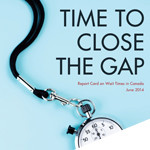 Children choose dessert before supper. They stay up late, sleep in ’til noon, and leave homework for tomorrow. They never choose to spend less of Mom’s money. If my kids could, they would eat and play and spend until it was all gone.
Children choose dessert before supper. They stay up late, sleep in ’til noon, and leave homework for tomorrow. They never choose to spend less of Mom’s money. If my kids could, they would eat and play and spend until it was all gone.
Ontario debt rests in the hands of voters. Will they act like children?
Arrogance makes us think riots only happen in other countries, less civilized places.
Ignorance makes us think we can keep spending other people’s money, increasing debt and handouts.
We’ve almost run out of other people’s money to spend. Ontario has $300 billion of debt. ($300 freaking billion!) We cannot fix our finances by taxing the rich; they already fund most of the taxes. Industry won’t risk investing in Ontario if they think tax hikes loom next year.
We must spend less.
Ontarians must insist that politicians spend less. We must cut any service we can live without until we can pay for it debt free. We must stop all discretionary spending and choose the cheapest options for necessities.
If we do not, capital markets will turn on us. Interest rates on our debt will sky rocket. We will become insolvent, unable to cover our liabilities.
Solutions include: austerity measures, issuing debt bonds, heed the 350 recommendations of the Drummond report, increased class sizes, no funded kindergarten, and consider every opportunity for privatization. Bureaucracy is a luxury we cannot afford until things improve.
Childish instant gratification threatens to ruin Ontario…and the rest of Canada with it.
I hope Ontarians vote like adults.
(photocredit: memegenerator.net)


